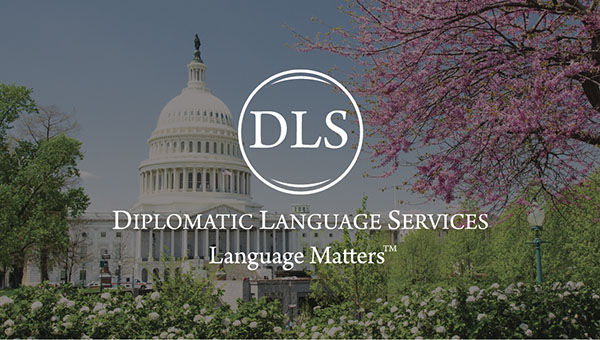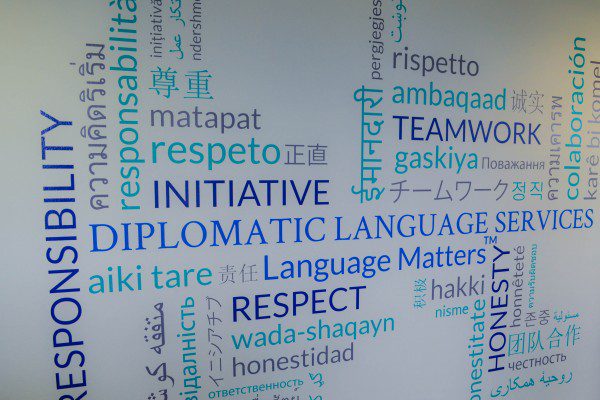Vernacular Reality Podcast Ep. 2 Transcript
Welcome back to Vernacular Reality! Today, we’re back with Chris and Sean to discuss different potential perspectives from users and more about why language learning in virtual reality is important for DLS and our industry.
Can we get a summary of what DLS is currently working on in terms of VR?
Bellas: We’re creating these photo-realistic virtual environments that our students and instructors can immerse themselves in, where they can collaborate and perform activities. These virtual environments are made from 3D images from real-life locations where our students are planning to go. Initially, we’re beginning with a location in China called Taxia village in Fujian province.
From the perspective of someone who has never used VR before: what does language learning in virtual reality look like?
McBeth: We make the comparison to this existing tool in the language instruction field called ISO immersive role-play. It could be as simple as lining up a few chairs in a classroom and calling that a bus, then role-playing ticket purchase on the bus. Or, it could be as complex as decorating a room and setting up tables with props and making those into shops, banks, dinner parties, etc. That’s something that people already do within their language training curriculum. What virtual reality in language learning intends to do is take that concept and make it richer and culturally appropriate, while also making it possible to repeat these exercises and have the ability to do them without taking over a room.
I know that a lot of foreign language learners are probably receiving the classic advice of ‘the best way to learn a language is to go to the place where it’s spoken’. To really go and be surrounded by it, yeah?
Bellas: That was my experience, and is the experience of many students. Common advice is that you should go there, and it makes sense. There’s a preference for people to have experiential learning. At the same time, people don’t like making mistakes. That’s particularly a challenge that our students face, in terms of high expectations that are on them- they need to have a professional working level of proficiency by the time they get there or before. That’s always been our core purpose as a business, to prepare them for that. This is challenging because people say you need a significant amount of time immersed in the language and culture to have that level of proficiency and consistently be successful. In those situations, we hope the VR product is going to help us achieve that with them.
McBeth: My parents have this friend that used to work in chemical weapons nonproliferation. He used to work for our government Bureau that would go out and inspect chemical weapons storage facilities. These old facilities and former Soviet bloc countries to make sure that they weren’t storing new chemical weapons there. And so that’s not really the sort of environment that you can go to and immerse yourself in for three to six months beforehand. You know you’re working with military personnel working in a highly technical field where the terminology is just not something you’re going to experience in day-to-day life.
Those are things that are really important to prepare for and just it’s not really possible to do that just by going and living somewhere. You’re not going to. You’re not going to live in Romania for six months and get any experience with military bases while you’re there.
From the perspective of those who maybe have used VR before, what do you think is so special about our application?
McBeth: So, you look at the market of language learning apps that are out there. Most of them are smartphone-oriented. Very few that are VR-oriented. But of all the apps that are out there, I think ours is one of the few that’s really focused on an existing one on one language instruction curriculum.
The vast majority of the apps that are available are vocabulary drilling or they might have pre-canned videos that you watch and then maybe respond to with a multi-choice selection of dialogue and those things can be really great for practice. But they don’t really get you into that sort of dynamic conversation and social interaction that is so important for language learning, so it’s kind of like the difference between going on to YouTube and finding workout videos versus hiring a personal trainer. OK, so.
So, how will that sort of thing actually be used within a classroom? For example, I’m taking a one-on-one language class, I’m enjoying the class, and I’m loving my instructor. Will the instructor be involved somehow in this VR language learning, or am I just going to be on my own wandering around this foreign place?
McBeth: Yeah, your instructor is there in the virtual environment with you. We’re developing different interaction styles. They could be in the same physical room with you, working from their PC while you’re on a VR headset, or they might meet with you over the Internet, like a teleconferencing system. We provide a voice chat system within the application. This helps you feel like you’re talking to another person who’s standing in front of you. In either case, you’re still working with your teacher, to go through these different activities.
Bellas: We’re trying to make sure we start with use cases are as close as possible to DLS’ core business, which is primarily instructor-led language training, and with this purpose of preparing people for human interaction in a foreign language, culture, and environment. This is where the instructors’ involvement becomes central.
In addition to using it one-on-one with an instructor or in small groups, we’ve also planned since early on for students, on their own, to be able to go in and freely explore locations that they’re interested in and do activities there in a self-directed way. We think this could be beneficial to the students in the same way flashcards, online quizzes, or other kinds of language learning apps could be used for homework.
It’d be a great way for students to familiarize themselves with the location with vocabulary activities etc. In preparation for class, (and because our training is responsive to the needs of students in the process of exploring), students can bring up questions they have with their instructor. Questions may arise as students find things they take interest in, have concerns about what challenges they may face in the virtual environment, or have questions about the language, location, or culture.
Yeah, I love how customizable and immersive this application seems to be, but that’s just me and my opinion. Switching perspectives: some may be thinking, ‘I don’t like video games’ or ‘I got sick the last time I used VR’. What would you tell those people?
McBeth: That’s a concern for us. Simulator sickness is a big deal because we’re not just covering gaming enthusiasts. We’re covering a broad range of people. We keep an eye on the latest academic research in VR systems design. I’ve even taken a page out of airline flight safety systems, how they analyze and categorize risk. Through that literature review and our testing, we’ve come up with explicit design metrics that our applications must adhere to to address the causes of simulator sickness. This is codified in our engineering documentation to ensure everything we make hits those points.
As for not liking video games, it’s certainly something I understand. I used to love video games when I was a kid, but since I’ve had my own, I don’t have the patience anymore. Looking at other areas of computing, you can draw the analogy to two existing applications. You might compare Microsoft’s Word to Minesweeper. These programs are different in purpose but have a lot of similar user interaction elements. They have buttons and use a mouse pointer to click on those buttons. It’s all graphical elements on the screen.
However, their purpose is different. Look at the history of these systems’ development. Early on, people thought 2D graphical user interfaces were only for games. Thirty years later, nobody uses the old text-mode interfaces anymore. We do our work in this environment, so we think of virtual reality as a general-purpose computing interface. There will be a lot of similarities between how you interact with our application and how you interact with a virtual reality game, in the sense that you’re wearing a headset and have controllers, but ultimately, they’re different applications. It comes down to the motivation of what you’re doing. This isn’t a video game it’s a learning tool.
Say I’m taking regular classes, enjoying them. Why would it be so important to do language learning in virtual reality? Can I just keep taking my regular classes?
McBeth: We’re designing this as a tool for teachers and students to decide they want to use. Similar to how a teacher and student decide they’re going to use flashcards or YouTube videos in language instruction. This VR experience is another tool that will be at their disposal. That we are improving the learning process not just for language learning, but for all kinds of learning. We’ve seen evidence that having this immersive environment improves student motivation. It’s an enjoyable experience. The richness of detail draws people in, and they want to practice more.
There’s also improvement in comprehension of the material having the higher Fidelity of information provided to them having the culturally appropriate visuals and sounds set the stage for learning. People find that their recall of that information is greatly improved.
There’s also an aspect called embodied cognition, which is colloquially called muscle memory. There’s neurochemistry, where having these multiple sensory inputs during the learning process creates multiple neural pathways for information that you’re learning. So, it’s just deeply embedding that knowledge in your brain and giving you multiple ways of recalling it. Kind of like how smells can help you recall a certain memory or hearing a certain jingle can bring you back in time. All of those different sensory cues link together in our memory.
Specifically for language learning, we see that having this immersive environment with rich detail in the content improves people’s listening and speaking abilities. We’re getting out of a contrived scenario and into a realistic scenario. People find that it’s just easier to understand what’s going on when you have that dynamic, realistic simulation.
For more DLS, check out other blogs and visit us on Facebook, LinkedIn, Instagram, or Twitter!







